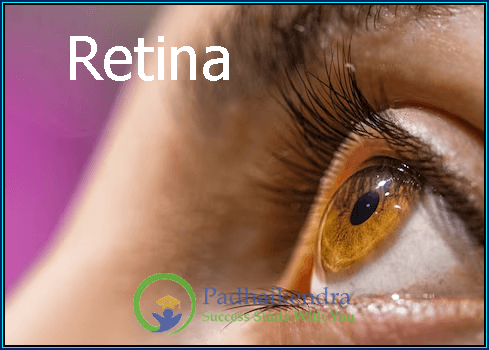The retina, located at the back of the eye, is a delicate and vital layer of tissue that plays a crucial role in our ability to see. It consists of specialized cells known as photoreceptors, which possess the remarkable ability to convert light into electrical signals. These signals are then transmitted to the brain, where they are transformed into the visual images we perceive.

Two primary types of photoreceptors can be found in the retina: rods and cones. Rods are highly sensitive to light but lack the ability to detect colors. On the other hand, cones are less sensitive to light but are responsible for color vision. There are three types of cones, each specialized in perceiving a different color of light: red, green, and blue.
In addition to photoreceptors, the retina also contains a layer of nerve cells called ganglion cells. These cells are responsible for transmitting the electrical signals generated by the photoreceptors to the brain for further processing and interpretation.
Eye Conditions Affecting the Retina
Various eye conditions can impact the functionality of the retina. Some commonly encountered retinal disorders include:
Age-related macular degeneration (AMD): This condition, prevalent among individuals over the age of 60, is the leading cause of vision loss. It results from damage to the macula, which is responsible for central vision.
Diabetic retinopathy: Occurring as a complication of diabetes, this condition damages the blood vessels in the retina due to high blood sugar levels.
Retinal detachment: A serious condition characterized by the separation of the retina from the back of the eye, often resulting in sudden and severe vision loss.
Macular hole: A small aperture in the macula that can lead to blurred vision and visual distortions.
Epiretinal membrane: A thin, web-like tissue that forms on the surface of the retina, causing visual disturbances like blurred vision and the perception of floaters.
Treatment Options for Retinal Disorders
The appropriate treatment for retinal disorders depends on the specific condition. Some commonly employed treatment methods include:
Laser surgery: This technique is used to address various retinal conditions, including diabetic retinopathy, macular degeneration, and retinal detachment.
Intravitreal injections: Medications, such as anti-VEGF drugs, can be injected into the eye to treat conditions like diabetic retinopathy and macular degeneration.
Surgical intervention: In cases of retinal detachment, surgery may be required to reattach the retina and restore vision.
Protecting the Health of Your Retina
Maintaining the health of your retina is crucial for preserving good vision. Here are some steps you can take to safeguard your retina:
Regular eye test: It is important to schedule regular eye examinations, particularly if you have a family history of eye diseases or are at risk of developing conditions such as diabetes.
Balanced diet: Consuming a nutritious diet rich in fruits, vegetables, and whole grains can provide essential vitamins and minerals that help protect the retina from damage.
Regular exercise: Engaging in physical activity promotes healthy blood flow to the retina, reducing the risk of damage.
Quit smoking: Smoking not only harms overall health but also increases the risk of retinal damage and eye diseases. Quitting smoking can significantly lower these risks.
Sun protection: Shielding your eyes from harmful ultraviolet (UV) rays by wearing sunglasses that offer 100% UV protection when spending time outdoors is crucial for safeguarding the retina.





